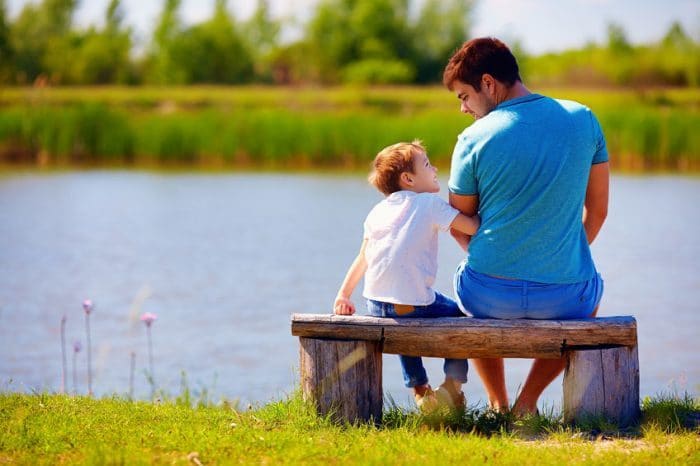Active listening is a respectful way of treating children. On the one hand, they feel heard and, on the other, it helps them pay more attention to adults and better understand their explanations . In fact, this method not only facilitates communication in the family but also enhances empathy and strengthens emotional ties.
What does the active listening method consist of?
Active listening involves a series of attitudes and behaviors that prepare both people to listen and speak, tuning in emotionally. In fact, it is not a new concept, the term “active listening” emerged in the mid-1950s, from the hand of humanistically oriented psychologist Carl Rogers.
However, it was Thomas Gordon who popularized this idea and turned it into a method for parents, although the truth is that it is more of an attitude towards parenting. In the family environment, applying active listening means listening carefully to the children standing at eye level, so you can make eye contact. In this way, the little ones will feel that their parents are closer to them and they will have the certainty that they are important to them.
In fact, it is important for parents to understand that approximately until they are 12 years old, children live in a world very different from that of adults, both from a sensory and perceptual point of view, so bending down to talk to them and listen to them implies shortening that distance and establishing a stronger affective relationship.

However, it should be clarified that active listening does not simply involve bending down and looking children in the eye, but also being able to empathize with their emotional states, understand their concerns and, of course, , transmit calm and serenity to them.
The most interesting thing about this method is that it can be applied in any circumstance, both to explain something to the child and to calm him down when he has a tantrum or just to listen to him or tell him how much you love him. We cannot forget that eye contact and physical closeness are very useful tools to connect emotionally.
The benefits of active listening for parents and their children
In addition to fostering the affective bond, educating a child in the principles of active listening implies protecting him in the future. This model of communication conveys the idea that all people deserve to be treated with attention and respect, so it will be easier for the child to identify patterns of bullying and reject them, something that does not happen if the child grows up in an environment where yelling and emotional indifference are daily bread.
Active listening, on the other hand, serves as an emotional validation tool, and when the child receives the validation they need, they are likely to grow into a secure and confident adult with good self-esteem.Parents should always have keep in mind that the way of relating with your children will leave deep marks on the child’s personality.
In the case of parents, active listening will allow them to better understand their child. By getting down to their level, you will be able to be more empathic and understand what they are feeling, which will allow them to help you better. In fact, we tend to think that listening is a passive process, but in reality it is not. Active listening forces parents to get out of their world and into their children’s universe, which is very helpful because it allows them to detect all those little emotional cues that otherwise would have gone unnoticed. Therefore, active listening makes parents more sensitive and emotionally available.
